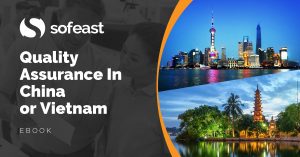 Looking back over the past few years, several trends have come and gone. One of them is the interest of most importers in moving production out of China.
Looking back over the past few years, several trends have come and gone. One of them is the interest of most importers in moving production out of China.
2009 to 2011: low-cost Asia was fashionable
The context was clear: prices of made-in-China goods were increasing by 15-30% a year, and the future was not pretty.
The demographics (less young Chinese), the central government’s five-year plan, and the rise in the RMB/USD rate, all promised further cost increases.
Importers were advised to focus on strategies such as:
- China + 1: developing production in another country, and slowly transferring volumes there.
- Out of China: just get out now if you can!
As I wrote in New sourcing destinations in Asia: let’s be serious., some exotic destinations are still fashionable. But their business case is often pretty weak.
The hype around “reshoring”
In 2012 and early 2013, lots of articles mentioned a “reshoring” movement, back from China. Not only in the US, but also in some European countries. These articles were based mostly on isolated anecdotes!
Plenty of challenges are awaiting those tempted by this solution. It does make sense in certain product categories (especially high-shipping-cost and low-labor-content items), but not in others.
Since 2012: back to reality
Most importers have realized that sourcing hard goods or electronics in Vietnam or in India was not always a good idea.
Relocating production is difficult, especially for SMEs. And it is risky (look at all the bad press surrounding brands that produce in Bangladesh, for example).
A funny illustration: the French Chamber in Hong Kong launched their first edition of the ”Made in Asia, Looking Beyond China” conference in 2011. In their latest edition (2 months ago), the general tone was “after all, China is not bad when compared to other countries”.
And, to the Chinese manufacturers’ credit, they haven’t been standing still. Some of them have moved production to cheaper areas, others have contained cost raises by improving productivity, and many have improved their offer’s quality/feature set.
Consequence: a renewed interest in optimizing China operations
And the logical question for hands-on buyers is: “how do I improve my supplier base?”
The seminar we organized recently (“how, as a buyer, I push my key Chinese manufacturers to improve their operations – experience sharing on supplier development programs”) was a nice success — two attendants flew in from Beijing, two came from Hong Kong, while others came from Jiangmen, Foshan, and Guangzhou!
Do you also see a growing focus of importers on improving their supply chain in China?
Sofeast: Quality Assurance In China Or Vietnam For Beginners [eBook]
This free eBook shows importers who are new to outsourcing production to China or Vietnam the five key foundations of a proven Quality Assurance strategy, and also shows you some common traps that importers fall into and how to avoid or overcome them in order to get the best possible production results.
Ready to get your copy? Hit the button below:

